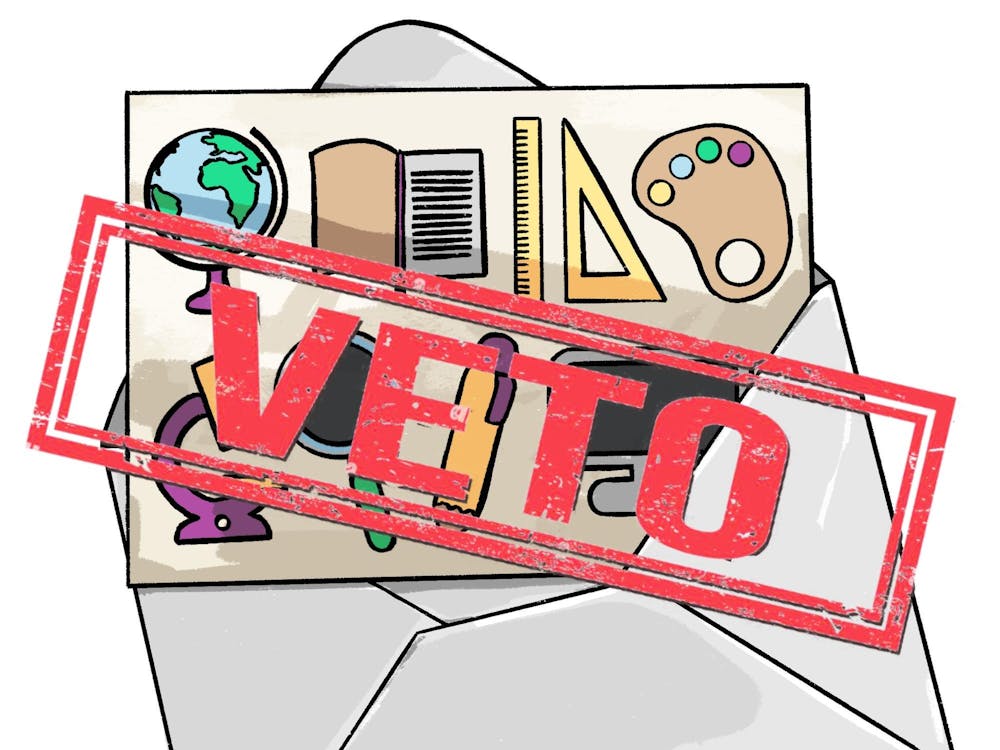Oxford resident Jim Hermann set up trail cameras on his property hoping to catch the beavers that were chewing on the trees. Instead, he saw images of river otters, not commonly seen in Oxford, playing on downed tree branches.
“For me, it was very exciting and unexpected,” Hermann said. “If somebody asked me, ‘Do you hope to capture otters along the creek?’ I would say, ‘I know they’re back in Ohio someplace, but I wouldn’t have expected them here.’”
River otters are native to Ohio and should be playing in every river and creek. The reason they are rarely seen is because of the direct actions of humans. Continuously hunted for their soft, brown fur, river otters were wiped out in the 1900s in Ohio and eventually reintroduced in 1986, according to the Ohio Department of Natural Resources.
Steven Sullivan, director of the Hefner Museum of Natural History on Miami University’s campus, said he hopes everyone cares about conserving the ecosystem and its inhabitants.
Sullivan said there are three main reasons why we should care about our environment: aesthetic, utilitarian and ethical. Aesthetic reasons because many enjoy looking at nature’s beauty. Utilitarian reasons include animals, plants, trees and water systems providing resources to people. Lastly, Sullivan said ethical reasons are important because humans should not decide what lives and dies. He said all organisms on Earth have value and contribute to the ecosystem.
“Otters belong here as a resource, as an aesthetic thing – people tend to find them beautiful – and as an ethical thing,” Sullivan said. “They are an organism that lives on our planet.”
Two other species, the bobcat and mink, were also intentionally killed off by humans and are now reappearing in Ohio in recent years.
“There are bright spots,” Hermann said. “One of those bright spots is the reappearance of these big mammal and bird species that have come back to Ohio. They’re coming back naturally or from surrounding states, or in the case of the otters I believe there was an intentional reintroduction of otters that had been trapped elsewhere and released into the Ohio waterways.”
A 2019 study done by the Ohio Department of Natural Resources found that the reintroduction of otters from Arkansas and Louisiana has been largely successful. They report that 83 out of 88 counties in Ohio have confirmed some river otter presence, especially in eastern parts of Ohio. They find that the increasing number of otters is likely due to improving aquatic habitats, expanding beaver populations and growing restoration efforts in surrounding states.
Aiden Schmeling, a senior majoring in biology, sustainability and geographic information science, works with Sullivan in the Hefner Museum. Schmeling said he believes that otters are a great conservation success story.
“We want to have a healthy population that can sustain itself and provide resources,” Schmeling said. “They are a mid-upper level predator on fish and aquatic life, so that indicates there’s adequate water quality for our fish. It tells us that we have a big enough ecosystem to support a predator.”
The nocturnal, semi-aquatic mammal has made a comeback after being missing in Ohio for years. Today there are estimated to be over 6,500 river otters in Ohio, according to the Ohio Department of Natural Resources.
Enjoy what you're reading?
Signup for our newsletter
Sullivan said that the number of otters and other rare species, such as bobcats and mink, will only increase if we do our part for the environment.
“It remains to be seen if [otters] will become that common,” Sullivan said. “It's up to you and I and all of our friends to make the decisions. Do we want to live in a world that is governed by natural principles? Will we let those natural principles establish natural ecosystems, or are we just going to be constantly fighting against things and ultimately be making rivers that have one hundred year floods all the time?”




